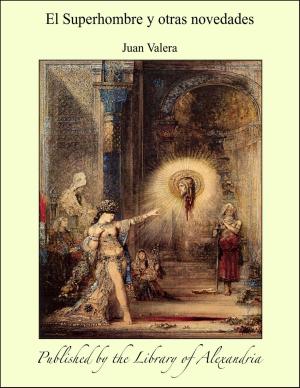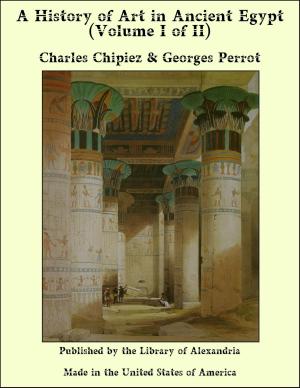The Lower Depths: A Drama in Four Acts
Nonfiction, Religion & Spirituality, New Age, History, Fiction & Literature| Author: | Maksim Gorky | ISBN: | 9781465609205 |
| Publisher: | Library of Alexandria | Publication: | March 8, 2015 |
| Imprint: | Language: | English |
| Author: | Maksim Gorky |
| ISBN: | 9781465609205 |
| Publisher: | Library of Alexandria |
| Publication: | March 8, 2015 |
| Imprint: | |
| Language: | English |
De profundis ad te clamavi. In this phrase, with his penchant for epitome, the late James Huneker summarized the masterpiece of Russia’s single living master of the drama, Maxim Gorky, as he saw it in Berlin under the German title of “Nachtasyl” or “Night Lodging.” “Na Dnye” is the Russian—literally “On the Bottom.” Partly because “The Lower Depths” is a more faithful rendering of the original than “Night Lodging” and partly because it implies so vividly the play’s keynote as the shrewd Huneker detected it beneath a guise alien to both Russian and English, the title adopted by Laurence Irving for the British version has been preferred for its introduction to American audiences by the company which discovered it and first set it on its stage in Moscow, December 31 (our calendar), 1902. In “The Lower Depths” more than in any other single play throughout its history, the Moscow Art Theatre concentrates its dramatic ideals and methods, its esthetic theory and practice, and through the production of this play it most emphatically justifies its artistic faith in spiritual or psychological realism as a dramatic medium of expression. The plays of Tchekhoff, of course, serve the same ends, but no single one of them does so quite as richly as does Gorky’s masterpiece. At the hands of Stanislavsky and his associates, “The Lower Depths” draws much of its convincing power from its unusual use of and dependence on the channels of expression which are peculiar to the art of the theatre. It is almost wholly independent of drama as literature. Less than any play I know, is it possible to imagine its potential effect in the theatre from a reading of its printed lines. In my book, “The Russian Theatre,” I have thus analyzed this factor: “‘The Lower Depths’ is not so much a matter of utterable line and recountable gesture as it is of the intangible flow of human souls in endlessly shifting contact with one another. Awkward but eloquent pauses and emphases, the scarcely perceptible stress or dulling of word or gesture, the nuances and the shadings of which life is mostly made and by which it reveals its meaning—these, and the instinctive understanding of the vision of the playwright by those who seek to interpret him, are the incalculable and unrecordable channels through which ‘The Lower Depths’ becomes articulate at the Moscow Art Theatre.” Just as this theatre discovered or, rather, rescued Tchekhoff as a dramatist, so it first stood sponsor for the author of “Foma Gordeyeff” as a playwright. During the first half of the season of 1902-1903, two of his plays were produced—“Smug Citizens” and “The Lower Depths.” The latter was recognized at once as a work of supreme merit and moment. Tchekhoff himself had written to its youthful author five months before its première: “I have read your play. It is new and unmistakably fine. The second act is very good, it is the best, the strongest, and when I was reading it, especially the end, I almost danced with joy.” At the première, the rival dramatist’s verdict was publicly ratified, for Gorky was called before the curtain twenty times, and the press was unanimously enthusiastic. The play has held its place in the repertory of the Moscow Art Theatre ever since, and eight of its most important rôles are still played by those who created them, just two decades ago.
De profundis ad te clamavi. In this phrase, with his penchant for epitome, the late James Huneker summarized the masterpiece of Russia’s single living master of the drama, Maxim Gorky, as he saw it in Berlin under the German title of “Nachtasyl” or “Night Lodging.” “Na Dnye” is the Russian—literally “On the Bottom.” Partly because “The Lower Depths” is a more faithful rendering of the original than “Night Lodging” and partly because it implies so vividly the play’s keynote as the shrewd Huneker detected it beneath a guise alien to both Russian and English, the title adopted by Laurence Irving for the British version has been preferred for its introduction to American audiences by the company which discovered it and first set it on its stage in Moscow, December 31 (our calendar), 1902. In “The Lower Depths” more than in any other single play throughout its history, the Moscow Art Theatre concentrates its dramatic ideals and methods, its esthetic theory and practice, and through the production of this play it most emphatically justifies its artistic faith in spiritual or psychological realism as a dramatic medium of expression. The plays of Tchekhoff, of course, serve the same ends, but no single one of them does so quite as richly as does Gorky’s masterpiece. At the hands of Stanislavsky and his associates, “The Lower Depths” draws much of its convincing power from its unusual use of and dependence on the channels of expression which are peculiar to the art of the theatre. It is almost wholly independent of drama as literature. Less than any play I know, is it possible to imagine its potential effect in the theatre from a reading of its printed lines. In my book, “The Russian Theatre,” I have thus analyzed this factor: “‘The Lower Depths’ is not so much a matter of utterable line and recountable gesture as it is of the intangible flow of human souls in endlessly shifting contact with one another. Awkward but eloquent pauses and emphases, the scarcely perceptible stress or dulling of word or gesture, the nuances and the shadings of which life is mostly made and by which it reveals its meaning—these, and the instinctive understanding of the vision of the playwright by those who seek to interpret him, are the incalculable and unrecordable channels through which ‘The Lower Depths’ becomes articulate at the Moscow Art Theatre.” Just as this theatre discovered or, rather, rescued Tchekhoff as a dramatist, so it first stood sponsor for the author of “Foma Gordeyeff” as a playwright. During the first half of the season of 1902-1903, two of his plays were produced—“Smug Citizens” and “The Lower Depths.” The latter was recognized at once as a work of supreme merit and moment. Tchekhoff himself had written to its youthful author five months before its première: “I have read your play. It is new and unmistakably fine. The second act is very good, it is the best, the strongest, and when I was reading it, especially the end, I almost danced with joy.” At the première, the rival dramatist’s verdict was publicly ratified, for Gorky was called before the curtain twenty times, and the press was unanimously enthusiastic. The play has held its place in the repertory of the Moscow Art Theatre ever since, and eight of its most important rôles are still played by those who created them, just two decades ago.















